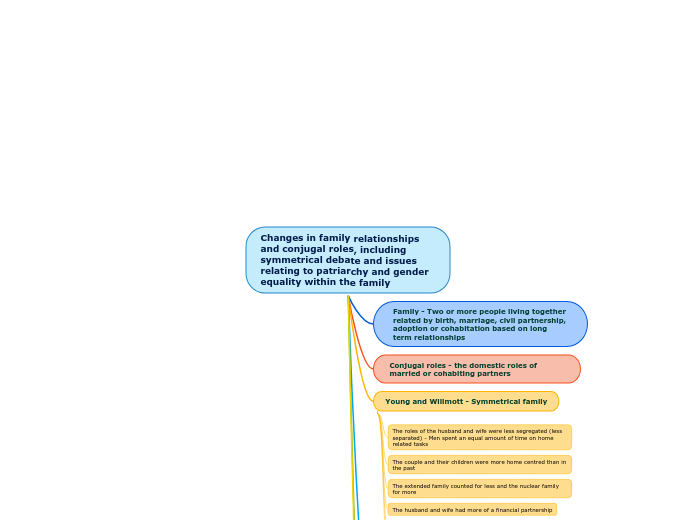Changes in family relationships and conjugal roles, including symmetrical debate and issues relating to patriarchy and gender equality within the family
Family - Two or more people living together related by birth, marriage, civil partnership, adoption or cohabitation based on long term relationships
Conjugal roles - the domestic roles of married or cohabiting partners
Young and Willmott - Symmetrical family
The roles of the husband and wife were less segregated (less separated) - Men spent an equal amount of time on home related tasks
The couple and their children were more home centred than in the past
The extended family counted for less and the nuclear family for more
The husband and wife had more of a financial partnership
The principle of stratified diffusion
Why was there a shift towards the symmetrical family?
Rise of feminism
More effective forms of contraception
Increase participation of women in paid employment
People's interest in home life has increased
Criticism of Young and Willmott
Feminist Ann Oakley (1974)
Scott and Clery (2013) - more dual earner households meaning women had double shift
Caroline Gatrell - Men tended to avoid the 'boring jobs' like ironing
Delphy and Leonard (1992) - the family is hierarchical and patriarchal
Domestic violence can be seen as another form of power and control in a relationship
Feminists argues why functionalists are wrong about the family being a positive, safe place for its members. Feminists argue that family life does not always function in ways that contribute to members' well being.
